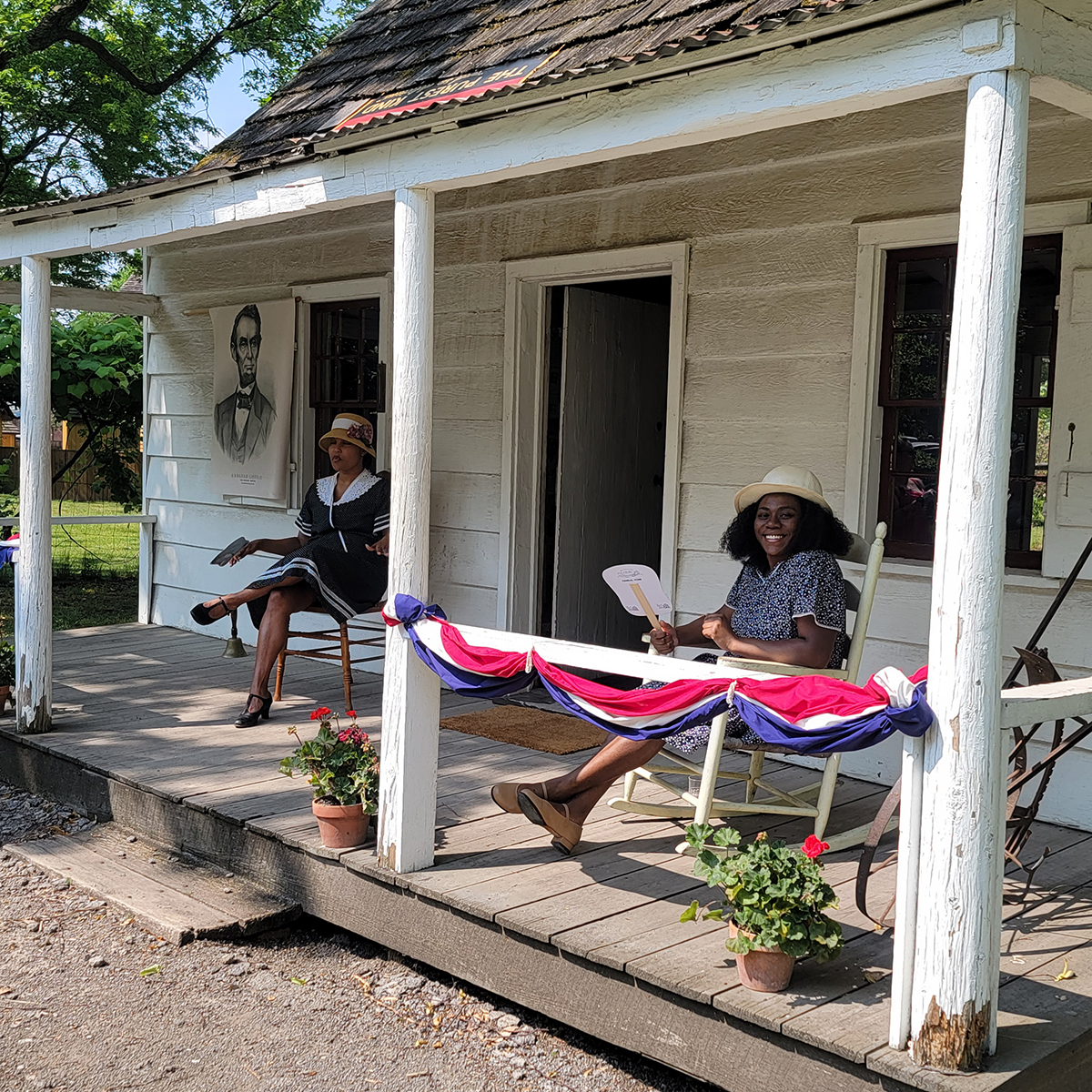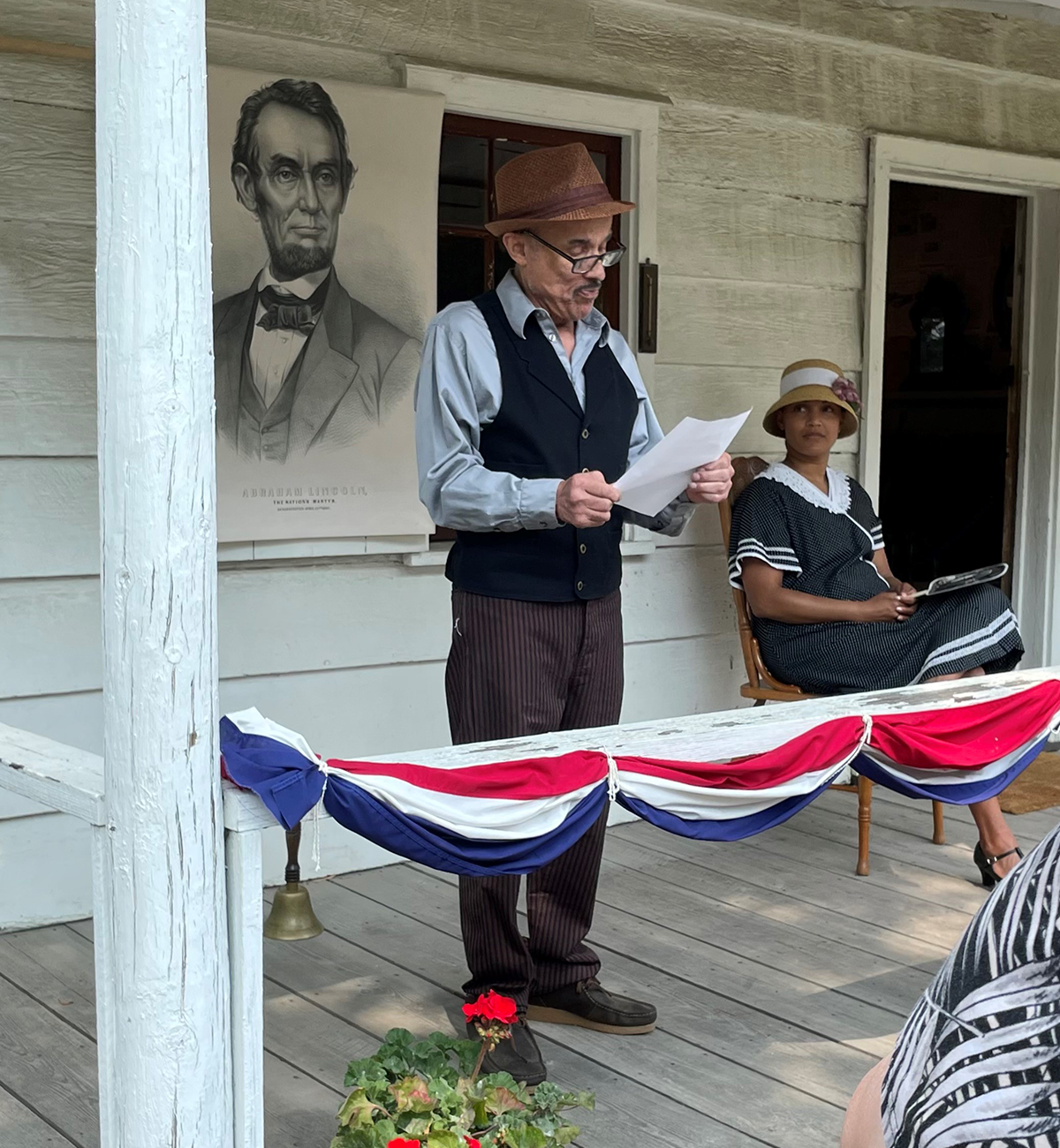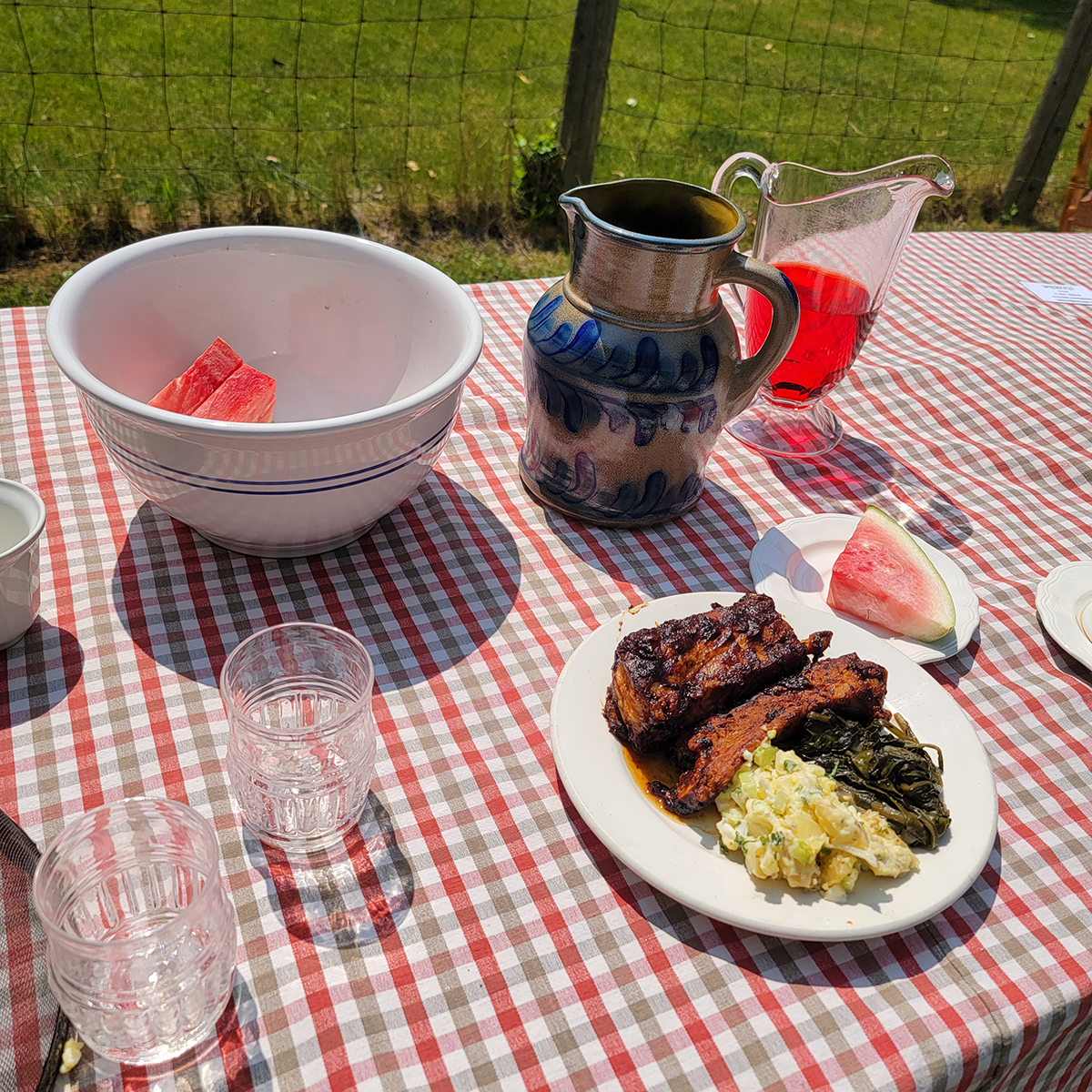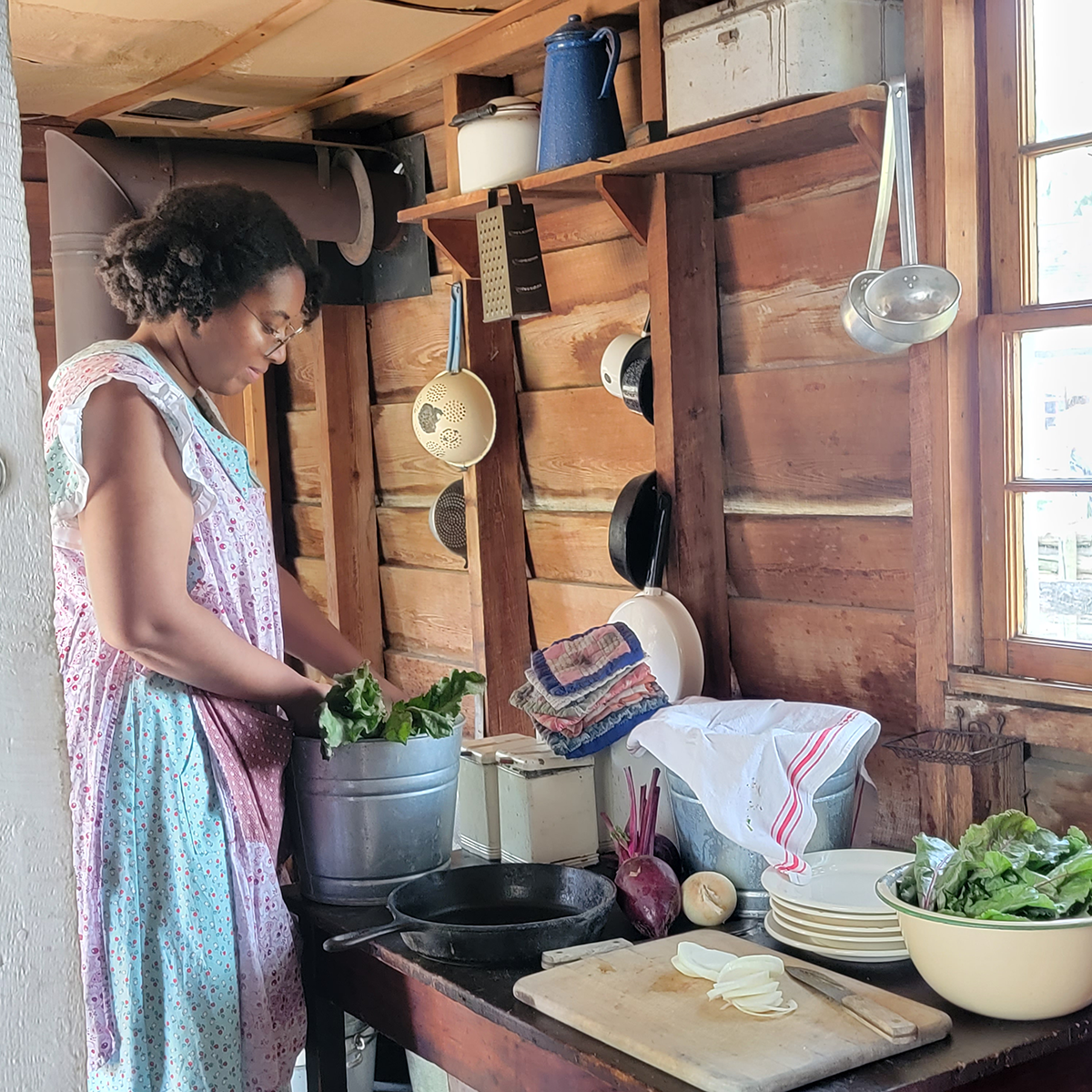Juneteenth at Greenfield Village: Celebrating Emancipation
Join us in celebrating Juneteenth with an emancipation picnic at the Mattox Family home in Greenfield Village.

Photo courtesy of the Greenfield Village Living History team
Juneteenth is the nationally recognized holiday celebrating the end of American chattel slavery and commemorating the day enslaved people in Galveston, Texas, were finally freed on June 19, 1865. On September 22, 1862, President Abraham Lincoln issued the Emancipation Proclamation, announcing his intention to free enslaved people held in Confederate states. When the proclamation went into effect on New Year’s Day 1863, his signature alone was not enough to free them all. The Union Army could only enforce the Emancipation Proclamation where it had taken control of Confederate territory, leaving the Confederate South emancipated in a patchwork of liberation across the states. Emancipation for the enslaved people of Galveston came nearly two and a half years after the Emancipation Proclamation was signed.
In Georgia, where the Mattox Family Home was originally located, freedom from slavery was also an issue of enforcement, resulting in multiple emancipation days across the state, depending on the Union Army’s movements. Still, these emancipation days were celebrated with just as much enthusiasm over the years, from the first days of freedom to today. Emancipation events brought together the community to commemorate the end of slavery but also to express their pride in what they had been able to achieve in the decades since the abolition of slavery. They celebrated with picnics, fairs, church services and parades, making floats and marching in honor of the date. Imagine the range of those early crowds — an elder born into slavery when it was illegal for enslaved people to learn to read and write could participate in the same emancipation parade as a child from their community attending a public school, or even go to an emancipation event hosted at one of Georgia’s nine Historically Black Colleges.

Photo courtesy of the Greenfield Village Living History team
From the very beginning of emancipation all the way to modern Juneteenth parties, food has always been an important part of celebrations. For Emancipation Day, families and communities would come together to enjoy the food, taking the day to picnic outside or gathering at the local church for banquets, bringing dishes to share and cook together. Many foods eaten on Juneteenth are culturally significant, and red drinks and foods are heavily associated with the holiday. Explanations for the origins of this connection vary. They include associations with African hibiscus flower teas and kola nuts — red plants brought to the Americas by West Africans — and a link to color symbolism, with red being associated with resilience and the blood of the suffering of enslaved ancestors.

Photo courtesy of the Greenfield Village Living History team
This Juneteenth at the Mattox Family Home, we will commemorate emancipation with a 1930 emancipation celebration vignette to re-create the sights, sounds and smells of these early 20th-century events. At our picnic table, you’ll find a red-dyed devil’s food cake — a precursor to the red velvet cakes that have become popular for Juneteenth parties today — and encourage you to try a midcentury recipe for Devil’s Food Cake with Cocoa and Butter Cream Icing, from The Ebony Cookbook: A Date With a Dish, to commemorate emancipation at your own home.
Devil’s Food Cake with Cocoa
½ cup shortening
1 ½ cup sugar
2 eggs, well-beaten
4 tablespoons cocoa
1 teaspoon red vegetable coloring
2 tablespoons hot coffee
2 cups flour, scant
1 teaspoon salt
1 teaspoon baking soda
1 cup sour milk or buttermilk
1 teaspoon vanilla
Cream shortening, add sugar gradually and continue creaming until fluffy. Blend in well-beaten eggs. Mix cocoa, red coloring and hot coffee together to form a smooth paste. Blend it into the creamed mixture immediately because cocoa mixture tends to stiffen upon standing. Sift flour once before measuring. Then sift flour, salt and soda together, and add to creamed mixture alternately with the sour milk (or buttermilk). Blend in vanilla. Pour into well-greased and floured pan, using one 8-inch tube-center pan or one 8-inch square pan or two layer pans. Bake cake in moderate oven 350 F, 35 to 40 minutes if layer pans used, or 55 to 60 minutes for 8-inch pans.
When cake is cool, spread white icing or any other desired icing over top, sides and between layers.
Freda DeKnight, The Ebony Cookbook: Date With a Dish, 1962, first published in 1948, p. 294
Butter Cream Icing
¼ cup butter
½ teaspoon vanilla
2 cups powdered sugar
3 tablespoons heavy cream
Cream butter gradually. Stir in sugar, adding vanilla and cream. Beat until smooth after each addition and adding just enough cream until icing is of proper consistency to spread.
Freda DeKnight, The Ebony Cookbook: A Date With a Dish, 1962, first published 1948, p. 310

Photo courtesy of the Greenfield Village Living History team
Sage Sampson is supervisor for living and inspiring history in Greenfield Village.

